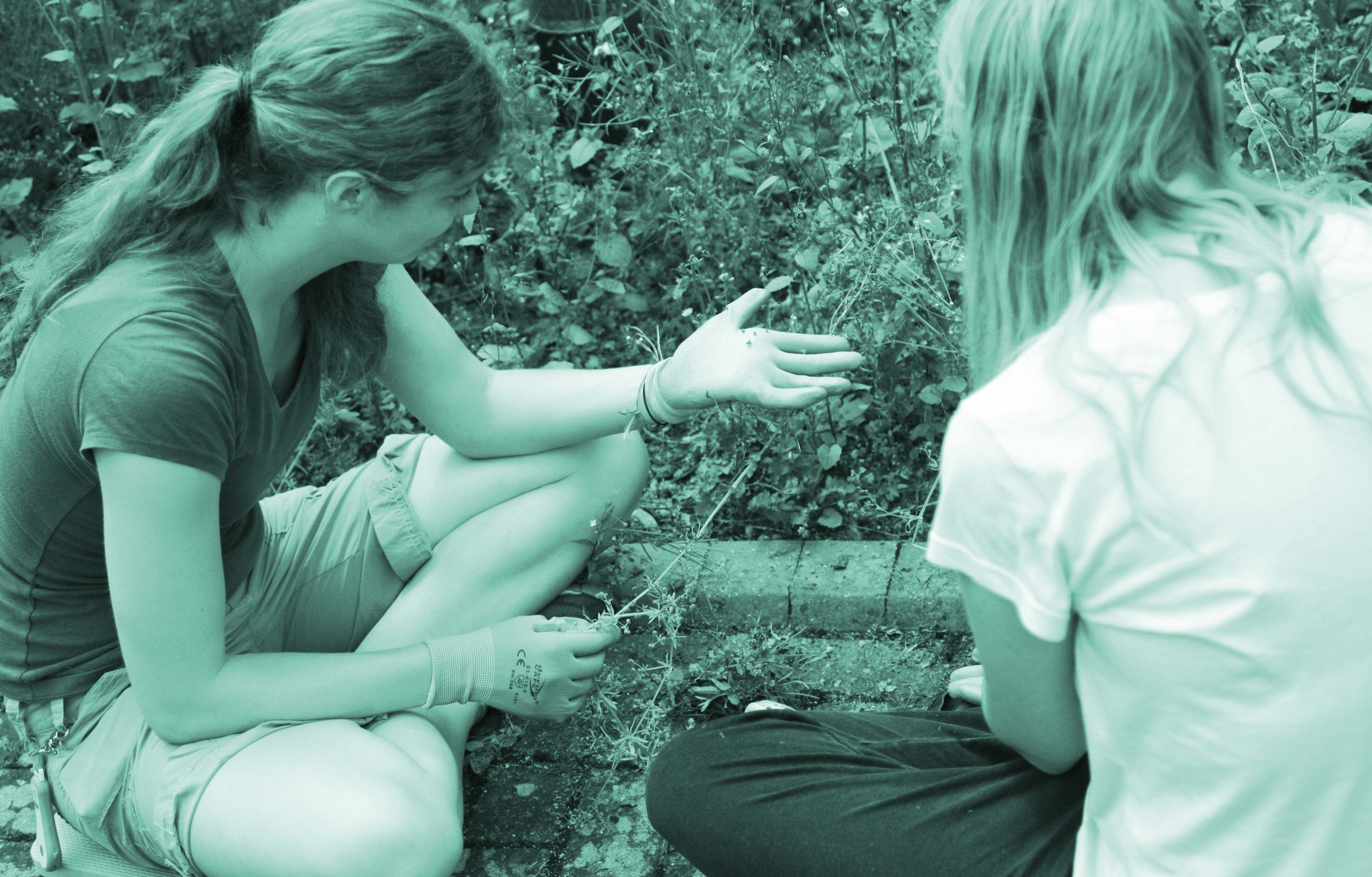Neurodiversity Training


This week Better Connect took part in Neurodiversity Awareness training through the ‘Diversity Training’ strand of Thriving at Work. Delivered by Suzanne Eusman at Autism Plus- one of our fantastic partners on both Thriving at Work (TAW) and Action Towards Inclusion (ATI), the training was certainly invaluable. We wanted to share some of the information.
Firstly, what is Neurodiversity?
Neurodiversity is a difference in brain activity that affects social, mood, emotional, learning, and mental functioning; the term refers to a range of neurological conditions, from Autism, Dyspraxia, and Dyslexia, to OCD, Tourette’s, ADD and ADHD, to name just a few. Some definitions are below…
In summary, neurodiversity refers to a range of conditions and neurological variations, whereas neurodivergent refers to an individual within one of these specific pockets.

Understanding *some* of the associated terms:
Autistic Spectrum Condition (ASC): A lifelong neuro-development condition that affects how a person communicates and interacts with other people and their environment.
Attention Deficit Hyperactivity Disorder (ADHD): A condition marked by an ongoing pattern of inattention and/or hyperactivity-impulsivity that interferes with functioning or development.
Attention Deficit Disorder (ADD): A ‘subcategory’ of ADHD where an individual may have problems with inattentiveness, but not with hyperactivity or impulsiveness.
Dyslexia: A developmental condition that results in difficulties with reading and writing.
Dyspraxia: A common developmental co-ordination disorder that affects movement and coordination- can affect the ability to plan and prioritise.
Dyscalculia: A learning disorder characterised by difficulties with mathematical reasoning and processing.
OCD: A mental health condition characterised by obsessive thoughts and compulsive behaviours.
Tourette Syndrome: A condition which can cause people to ‘tic’- making involuntary sounds or movements.
Pathological Demand Avoidance: A profile believed to be a sub-category of autism, wherein individuals avoid everyday demands, expectations, and commitments.
Anxiety Disorder(s): A mental health condition resulting in uncontrollable feelings of anxiety, fear and worry about everyday life or other significant stressors.
Depression: A mental health condition characterised mainly by a low mood.
Learning how to spot neurodiversity is integral to creating an accommodating, inclusive place of work, but just how do you recognise the signs of an often-invisible condition? Just this week, the BBC looked at why ‘women may wait decades for an ADHD diagnosis’:
‘’The prevailing stereotype ADHD affects only “naughty boys” means at least tens of thousands in the UK, it is estimated, are unaware they have the condition and not receiving the help they need.’’
‘’ “It’s the boisterous boys who are causing problems in the classroom who are going to be referred for help, not the quieter girls who are criticised for daydreaming or not paying attention – but those girls are also struggling,” Dr Young says. ‘’
‘’Experts say females often learn to “camouflage” their symptoms. They may be viewed as having anxiety or depression. They may have another condition alongside their ADHD, such as autism.’’
The NHS only recently recognised ADHD as a condition in 2009, and proportionally, women are less likely to receive a diagnosis, and more likely to receive a misdiagnosis than men: ‘’in 2019-20, 33,000 women were diagnosed compared with more than 100,000 men’’.
The takeaway here, is that it’s important to recognise the signs, but also the associated conditions within the field of neurodivergence. The presentation can be different for everyone- in the case of ADHD, presentation can manifest as disruptive behaviour, mental health conditions, and difficulties within the workplace- amongst others. But recognition, is just half the battle; it’s about integrating inclusive, effective strategies within the workplace, and sometimes, anticipating a need before it arises. Ask yourself on an organisational and individual level- how can I create a more supportive and inclusive environment?
So, how then, could you potentially spot ADHD in the workplace?
- Hyper-focus
- Perfectionism
- Struggles with time management
- Spontaneity/impulsivity & flexibility
- Daydreaming or ‘vacancies’
Tips to support employees with ADHD:
Find a comprehensive guide here for the tips mentioned below: An Employers Guide to ADHD in the Workplace
- Offer increased supervision
- Written instructions in place of verbal ones
- Operate a buddy system for maintaining focus
- Break tasks into cohesive steps
- Reduce distractions by allowing use of earphones and encouraging a designated workspace
- Larger computer screens
- Using visual prompts
- Allow regular movement / stretching breaks:
- Pomodoro working (25 mins work + 5 mins break, with longer break after 4 Pomodoros) – Scheduled breaks during long meetings / activities

A large focus of the training we undertook was also about understanding Autism, and its presentation. The social model is ‘Autistic Spectrum Condition’, but amongst medical professionals, it’s often phrased as a ‘Disorder’, which can sometimes bring with it an unwelcome set of challenges and workplace prejudices. ‘Disorder’, is a stigmatised term- it suggests an inherent disordered way of thinking and/or processing. Instead, the CIPD suggest that it may be ‘’more constructively viewed not as a ‘disorder’ but as a neuroprocessing style that results in a fundamentally different experience of the world’’- hence why ‘condition’ has made it’s way into our vernacular.
Similarly, ‘Functional labels’ like ‘high’ and ‘low functioning’ can be reductive and problematic, and risk ‘’denigrating the abilities and potential’’ of those on the spectrum, particularly those who are ‘’non-verbal’’ who could be ‘’supported via suitable accommodations such as assistive tech’’, as The CIPD write. But even this label of ‘’non-verbal’’ can be largely inaccurate. The preferred term is in fact, ‘Nonspeaking Autism’- which recognises the value of sound and the written word as a medium of communication for those with nonspeaking ASC.
ASC- a Brief Breakdown of Associated Traits:
- Individuals may interpret, engage, and respond to communication and social interaction differently.
- Individuals may respond to and manage changes to environment, situations, and surroundings differently.
- Some individuals may display a specific interest in a limited number of activities or interests.
Individuals with ASC may have difficulties with meeting new people, understanding emotions, humour and context, ambiguous and literal communication, and knowing when and how to start and end conversations, amongst other social communication challenges.
The ‘art’ of conversation was conceptualised rather helpfully to us as a game of tennis- the ball being the conversation batted back and forth.
But how do we know when to drop the ball?
These are all things as a ‘neurotypical’ individual, that I tend to navigate with relative ease. I look at the information around me, like body language and context, and these inform how the game of tennis is played- how and when I respond, or rather, don’t.
To some on the spectrum, this tennis analogy might be challenging in itself, as taking things literally is often considered as a characteristic trait of ASC. Out of curiosity, I’ve often wondered how our everyday idioms, like ‘’break a leg’’, ‘’beat around the bush’’, and ‘kill two birds with one stone’’ translate across different languages and cultures; meaning most likely lost. For some individuals on the spectrum, I imagine that understanding our everyday colloquialisms and dialectal differences must feel like grappling with a foreign language- I know I find some phrases nonsensical enough.
As it stands currently, only 22% of Autistic individuals are in employment, compared to 54% of all disabled people, and this number has risen throughout the pandemic. The question to ask here, is why? The answer is mostly likely remote/hybrid working. Although a chance to sit in your boxers on Zoom safe in the knowledge nobody knows, and get an extra hour of kip for some, for neurodivergent individuals, it’s provided a chance to secure, sustain, and thrive in employment. Sensory overload and social communication challenges can be negated, or at least, eased somewhat.

So, how can we ease the transition from hybrid to office, and support those already in employment?
Social support requirements:
- Break down introductions when introducing a member of staff with ASC to new colleagues
- Be clear on expectations
- Create a buddy network for support
- Ask, involve and do not assume
- Use literal communication
- Do not assume an individual will be able to learn from observing others
- Understand learning new tasks can take longer
- Do not make promises you cannot keep
- Enlist support of family and friends
General:
- Set clear dates – as dates and language can be very ambiguous, e.g., ‘get this back to me at 4’ rather than ‘get this back to me later’.
- Ensure you are clear and give all the information needed for a task
- Give written information, alongside verbal
- Consider your ‘’unwritten rules’’ as an organisation- and write these down, you can’t assume everybody has inherent knowledge
- Encourage routine and structure
- Foster a supportive environment with open communication
- Give warnings of changes to routine, staffing, work-place change
Environmental:
- Designate specific desks, rather than ‘hot-desking’, which can be an added challenge
- Provide quiet spaces free from distractions
- Allow things like headphones and earphones to combat sensory disturbances
Meeting considerations:
- Make language clear
- Offer a point of contact for any adjustments
- Make clear what the structure will be
- Virtual- give individuals the option to have their cameras off
- Make sure you ask if anyone has any accessibility requirements prior to the meeting
- Clarify if individuals are comfortable speaking in a group
If you’re interested in truly championing neurodiversity as an organisation, I highly recommend taking part in TAW’s Diversity Training, or Business Support. Neurodivergence shouldn’t be a barrier to employment, so let’s make employment accessible, and start integrating strategies for inclusion and diversity.
Our takeaway from TAW’s diversity training-
‘’This is a valuable skill for any employer’’
‘’I feel more capable and aware of spotting signs that someone may be neurodiverse’’
‘’I’ve gained understanding of what affects people with neurodiversity in the workplace and actions I can take to help them adapt and understand what is required’’
‘’Its important to have a better understanding and make people feel included and respected’’

If you’re a neurodivergent individual looking for workplace support…
TAW also offers 1-2-1 workplace support and coaching. for people who self-identify as being neurodiverse, disabled or experiencing mental health challenges. Express interest, here:
For a more extensive, less whistle-stop tour of neurodiversity in the workplace, and how to access diversity training, please contact Emma Lyons to find out more:
01423 795305
We also offer several free, upcoming lunchtime webinars.

Post by Laura Sandiford
Impact Manager
A keen storyteller & collaborator, Laura works as the Impact Manager together with our Head of Impact, Hannah, where she measures and highlights the impact of Better Connect across the business, programmes and partnerships.
She does so by working with a range of partners, participants and externals to gather information and stories, which she then translates into a range of engaging content across Better Connect’s channels. Ensuring the ‘Better Connect’ story is woven throughout all communications is a large part of Laura’s role, as is demonstrating the ripple effect across our programmes, partnerships, and sector-advocacy.
Laura’s favourite part of the role is connecting with the faces behind the case studies and giving voice to their experiences.
Learn more about Laura